Fearful Symmetry: Reflecting on the Definitive Kraven Story
How does this classic story read today?
I swear that I did not plan on writing about Spider-Man for three consecutive weeks. I had a different topic entirely planned for this week, but sometimes current events necessitate a change of plans. Such was the case when a truly shocking video made its way onto YouTube on June 19, 2023. I am of course referring to the trailer for Sony’s Kraven the Hunter.
What the hell was that? For those of you not familiar with Kraven, he is a classic Spider-Man villain created by Stan Lee and Steve Ditko way back in Amazing Spider-Man #15 (published in 1964). The son of wealthy Russian aristocrats, Kraven (whose real name is Sergei Kravinoff) is a big game hunter who stalks and kills his prey with his bare hands thanks to enhanced strength, speed, agility, and durability as a result of a mystical concoction of unnamed herbs that he regularly ingests. These herbs also significantly slow down the natural aging process. Despite appearing as a man in his thirties, Kraven is actually over seventy years old.
Having successfully hunted every dangerous animal on planet, Kraven decides to travel to New York City to hunt the most dangerous game of all: Spider-Man. He quickly became one of Spider-Man’s top villains in the Silver Age, and he even became one of the original members of the Sinister Six. Unfortunately for poor Sergei, he was routinely beaten by Spider-Man no matter what tricks he had up his sleeve.
To recap: Kraven is a Russian supervillain whose raison d’etre is to defeat Spider-Man and prove himself as the world’s greatest hunter. So naturally Sony has made a movie where he has no Russian accent, he fights poachers, has some sort of lion powers, and Spider-Man is nowhere to be found. Great job. Really nailed it.
As you can probably tell, I’m not super excited for this movie. I’m not totally sure who the target audience is, but it certainly isn’t me. It’s a shame because there are plenty of cool things you could do with Kraven as the villain in a Spider-Man movie. I was so disappointed in this trailer that I grabbed out some comics prominently featuring Kraven to read to purge it from my mind. The specific comics I read make up a story called “Fearful Symmetry” (named after “The Tyger” by poet William Blake), but it has since become much more widely known as “Kraven’s Last Hunt.”
If you’re a Spider-Man fan, you have almost certainly heard of this story. It is generally regarded as one of the best Spider-Man stories of all time, and there are plenty of folks who consider it the best Spider-Man story period. It’s a six issue story published in 1987 that spans all three of the ongoing Spider-Man series that were being published at that time (Amazing Spider-Man, Spectacular Spider-Man, and Web of Spider-Man). The idea that one story would be told across all three titles is a fairly common one today, but this was not the case in 1987. What makes this especially unique is that the creative team behind the story was not working on any of the three titles at this time. Not one writer, artist, or letterer that was currently working on any of those books contributed to the “Fearful Symmetry” story. I find that fascinating. That creative team was composed of J.M. DeMatteis (writer), Mike Zeck (penciler), Bob McLeod (inker), Janet Jackson (colorist), and Rick Parker (letterer). Bob Sharen is also credited as the co-colorist on Web of Spider-Man #31 (the first issue of the story).
Before jumping into the story itself, I wanted to take a look at what was happening with Spider-Man comics at the time. Prior to this story being published, the status quo for Spider-Man had seen some major changes. He had gotten a brand new black costume in Marvel Superheroes Secret Wars #8 in 1984, discovered it was a sentient alien life form attempting to permanently bond with him, and then managed to separate himself from it in Web of Spider-Man #1 in 1985. As of 1987, he was wearing a cloth version of that black costume given to him by Black Cat in Spectacular Spider-Man #99. I’ve seen a lot of discussions around “Fearful Symmetry” that mistakenly assert that Spider-Man is wearing the alien costume at this time, but that is simply not correct. The other major change to the status quo is that Peter Parker had recently gotten married to Mary Jane Watson in Amazing Spider-Man Annual #21 that had just been published on January 1, 1987. The “Fearful Symmetry” arc kicked off on September 30, 1987, so this was an extremely recent change.
The behind the scenes story of how this comic came to be is also a fascinating one. J.M. DeMatteis had originally pitched the idea to Marvel as a Wonder Man miniseries that would have seen the villain role inhabited by Wonder Man’s evil brother, Grim Reaper. Editor Tom DeFalco rejected the pitch. Undeterred, DeMatteis would end up taking the pitch over to DC and repackaged as a Batman story with Joker as the villain. Editor Len Wein rejected the pitch because there was already a major Batman story involving Joker in the works from Alan Moore and Brian Bolland called Batman: The Killing Joke. You may have heard of it. Interestingly enough, DeMatteis would eventually get to tell a version of that story in Batman: Legends of the Dark Knight #65-68 published from 1994-95. That’s a topic for another time. DeMatteis would end up reworking the pitch yet again as a Batman story with Hugo Strange replacing Joker as the villain. Yet again, it was rejected. I have to give DeMatteis a ton of credit here because I doubt I would have had the willpower to not give up on a story after three different rejections. Ultimately, Tom DeFalco and Jim Owsley would end up asking DeMatteis to become the monthly writer on Spectacular Spider-Man. DeMatteis took the opportunity to pitch his story one last time. Now it would be a Spider-Man story.
This is where things would get really interesting. DeMatteis obviously couldn’t use Joker or Hugo Strange in a Marvel story, and Grim Reaper has no ties to Spider-Man, so all of those villains were off the table. Instead, DeMatteis decided to create a brand new villain to serve as the antagonist in the story. He took his pitch to Owsley, and this time it was finally approved. This should have been the end of the story, but a twist of fate would shake things up one more time. DeMatteis was flipping through a copy of the Marvel Universe Handbook and just so happened to land on the entry for Kraven the Hunter. I’ll let DeMatteis tell this part in his own words:
Please understand that I had no interest whatsoever in Kraven. In fact, I always thought he was one of the most generic, uninteresting villains in the Spider-Man gallery. Couldn’t hold a candle to Doc Ock or the Green Goblin.
But buried in this Marvel Universe entry was one intriguing fact: Kraven—was Russian. (To this day I don’t know if this was something that had been established in continuity or if the writer of that particular entry tossed it in on a whim.)
Russian? Russian!
Why should that excite me so? One word: Dostoyevsky. When I read Crime and Punishment and The Brothers Karamazov in high school, they seeped in through my brain, wormed their way down into my nervous system...and ripped me to shreds. No other novelist has ever explored the staggering duality of existence, illuminated the mystical heights and the despicable depths of the human heart, with the brilliance of Dostoyevsky. The Russian soul, as exposed in his novels, was really the Universal Soul. It was my soul.
And Kraven was Russian.
In an instant, I understood Sergei Kravinov. In an instant, the entire story changed focus. In an instant, I called Owsley, told him to forget The New Villain. This was a Kraven the Hunter story.
That’s how “Fearful Symmetry” or “Kraven’s Last Hunt” came to be. With the creative team, status quo, and backstory now in place, we can finally dive into the story itself. I will provide a trigger warning here as this has some especially dark subject matter for a Spider-Man story. “Fearful Symmetry” contains depictions of drug use, mental illness, cannibalism, and suicide. There will also be major spoilers for this story that was published over thirty-five years ago. You have been warned.
Part 1: “The Coffin”
The story kicks off in Web of Spider-Man #31, and immediately the reader can see that this is not going to be a traditional Spider-Man comic. It opens on a splash page of Kraven totally nude crawling around on all fours in his trophy room of stuffed and mounted animals with a text box simply reading, “I am Kraven—.”
What an intro! From there, Kraven (seemingly in an ecstatic state not unlike a Viking berserker) begins attacking the stuffed corpses of the animals in his trophy room. After defeating his sedentary enemies, he begins getting dressed and thinking to himself about his own mortality. He acknowledges that the herbs he takes to give him his abilities and prolong his life aren’t working as well as they used to. He knows he will die soon, and he accepts that. What he can’t accept is the failure of never having been able to best Spider-Man.
While he’s contemplating his life, we see Spider-Man drop in on the funeral for a street level criminal named Joe Face. He’s there merely to throw down some money so that he can be given a proper burial. It’s a nice touch to show what kind of man Peter Parker is. He then returns home and thinks about his own mortality just as Kraven had been doing so earlier. One could say this is a bit of…symmetry.
Back at Kraven’s estate, the Russian is once again completely nude and plunging himself into a massive pile of live spiders. He then proceeds to stuff handfuls of the nasty critters into his mouth and eats them. It’s as disgusting as it sounds. I would not want to be arachnophobic and see these pages. The panels flip back and forth between Kraven eating spiders and Peter waking from a nightmare about spiders. More symmetry!
Peter suits up as Spider-Man to go on a swing through the city to clear his head, and Kraven suits up in his own costume to go hunting for Spider-Man with a rifle in hand. It should be noted that Kraven never uses guns, so this is quite a departure for him. As Spider-Man is swinging we see that Kraven is hearing William Blake’s “The Tyger” in his head but with “Spyder” in place of “Tyger” for this particular rendition. This story eschews the typical thought bubbles you would normally see in comics from this time for different colored text boxes instead. Each character is assigned their own colors of text boxes to make it easy to tell which character is thinking which thoughts. Kraven receives orange text boxes while Spider-Man’s are yellow, but those yellow text boxes turn red when he is stressed or panicked.
They quickly turn red when he is nailed by a drugged dart fired from Kraven’s rifle. Suddenly suffering from dizziness and hallucinations, Kraven moves in for the kill. He thwacks Spider-Man in the head with a wooden staff and then throws a net over him. Disoriented and tangled up in the net, Spider-Man is horrified by the crazed look in Kraven’s eyes as he approaches him with rifle in hand. Despite Spider-Man’s protestations that Kraven doesn’t use guns, the hunter lowers his rifle and shoots Spider-Man at point blank range.
Throughout the issue, we’ve been periodically shown a man slowly digging a grave. Now we see why (or do we?). Kraven has placed Spider-Man’s body in a casket, and he is lowering him into a grave at an impromptu funeral. The issue concludes with Kraven burying his fallen foe as he recites “The Tyger/Spyder” in his head. How’s that for a cliffhanger?!
Part 2: “Crawling”
The story continues in Amazing Spider-Man #293. Surely we will see that Spider-Man wasn’t actually killed and buried by Kraven, right? Right?!
No such luck. The issue opens with Kraven now dressed in his own matching black Spider-Man suit standing before Spider-Man’s grave and laughing maniacally. Not ideal.
On the next page, we’re introduced to the true villain of this story. That’s right! Kraven, the man who just murdered Spider-Man, is not the biggest threat in this story. That would be Vermin. You may remember Vermin from when I covered “The Child Within” a while back. If you missed out on that, Vermin is basically a rat monster created by the Nazi villain Baron Zemo in Captain America #272 (from the same creative team of J.M. DeMatteis and Mike Zeck as on this book). He has superhuman strength, agility, reflexes, and a heightened sense of smell. He also has razor sharp claws and the ability to mind control rats in his general vicinity. It took the combined might of Spider-Man and Captain America to bring him down in Marvel Team-Up #128 (also written by J.M. DeMatteis). Now Vermin is lurking in the sewers of New York City, and neither Spider-Man nor Captain America are around to do anything about it.
His first appearance in this story sees him grab a woman by the leg and drag her down an open manhole into the sewer where he proceeds to tear her apart and eat her. All the while, the sickly green text box for his inner monologue reads, “yum. yum. yum.”
You didn’t realize this comic was going to turn into a full blown horror story, huh?
While Vermin is devouring innocent people, Mary Jane is alone in her apartment wondering where her husband is. She tries not to give into negative thoughts about his safety, and she ends up smashing a rat to death with her boot. You may notice that rats are quite plentiful in this comic.
Meanwhile, Kraven is busy crawling around his house dressed as Spider-Man and breathing in an absurd amount of hallucinogenic drugs. He follows that up by lapping up a concoction of herbs and poisons from a bowl on the floor like a dog. This probably isn’t the healthiest behavior. He then hallucinates a giant mass of spiders coalescing into one giant spider monster that he must fight. All the while he is telling himself that he must become the Spider. His thoughts continue to become more fractured, and this is illustrated brilliantly by his mental text boxes appearing on the page at odd angles and overlapping with one another. It’s such a clever use of lettering to portray the mental state of the character. At one point his thoughts turn to his mother before quickly shifting away. File that away for later because it’s very important. This sequence is intercut with Vermin trying to work up the courage to leave the sewer, Mary Jane forcing herself out of the apartment to go for a walk, and a rat and a spider crawling around on Spider-Man’s grave. How can you not love comics?
These seemingly unconnected characters suddenly begin to cross paths. A couple of misogynistic men accost Mary Jane on the street for not paying them proper attention. We also see Vermin peeking out from under a manhole cover mere feet away from them. This could get ugly fast. Mary Jane suddenly goes from frightened to grinning when she sees Spider-Man drop down to rescue her from the men. Her husband is safe and sound after all! That relief quickly fades as this Spider-Man begins brutally handling her attackers. The first man is slammed face first into a brick wall. It’s unclear if he’s even alive. Spider-Man then begins punching the second man repeatedly with full force. A horrified Mary Jane, realizing this man is not her husband, pleads with him to stop.
Kraven the Spider hears her pleas and leaps off into the night. As he does, Vermin exits the sewer looking for food.
Part 3: “Descent”
The third part of the saga takes place in Spectacular Spider-Man #131, and this issue features one of my favorite covers ever. The cover for the next part in the story after this one is frequently held up as being iconic (and rightfully so), but I just love the way Zeck uses Spider-Man’s eyes and logo as the only parts of his costume you can see from the impossibly black shadows. Suddenly Spider-Man (who is actually Kraven) is the one who appears terrifying as the monstrous Vermin looks more like the victim than the predator. It communicates everything you need to know about the power dynamic between these two characters.
As for the issue itself, it opens with Kraven the Spider dropping in on a drug deal in a warehouse and quickly dispatching all involved. That includes snapping the neck of one of the men. Two police officers who arrive on the scene confirm that the man is dead, and Kraven proudly roars up at the sky atop a building.
That transitions to a sequence where Vermin snatches yet another woman off the street and devours her in an empty alley. He then scurries across the street directly into the path of an oncoming police cruiser. He jumps on the hood, shatters the windshield, and throws one of the officers into the street where he is promptly buried under a swarm of rats. Vermin is then grazed by a bullet from the other officer. He grabs her and throws her onto the hood of the car. Something about her reminds him of his mother, so he licks her across the face and spares her life. The whole sequence is just pure unadulterated nightmare fuel.
This spate of murders by Vermin is starting to gain media attention, and that means Kraven is also becoming aware of them. Kraven is aware that Spider-Man needed the assistance of Captain America to defeat Vermin previously and was not able to handle him on his own. Kraven’s new mission to prove himself to be the superior Spider-Man is to defeat Vermin in single combat.
Kraven (once again dressed as Spider-Man) enters the sewer to begin hunting his prey. He manages to locate Vermin, and the two begin to square off with one another. This is one of the best supervillain fights you will ever see. Kraven is hitting Vermin with everything he has while Vermin is tearing at him furiously with his claws and teeth. It’s utter savagery. Kraven eventually gets on top of Vermin and proceeds to pummel the holy hell out of him until he is rendered unconscious.
As the victorious Kraven carries Vermin’s unconscious body out of the sewer, we cut away to a hand emerging from Spider-Man’s grave with a lone yellow text box that simple states, “Mary Jane…?”
Part 4: “Resurrection”
The cover to Web of Spider-Man #32 is frequently held up as one of the most iconic covers in comic book history. It’s easy to see why. Spider-Man crawling out of his own grave in the pouring rain while wearing his black costume is about as cool as it gets. Mike Zeck is a legend, and this is him at his most legendary.
The issue opens with a glimpse into Peter Parker’s mind. He’s portrayed as being nude in an endless white expanse of nothingness, and he’s forced into conversation with the decaying corpse of Ned Leeds (Ned had recently been killed off following the reveal that he was the villainous Hobgoblin which was later retconned so that he actually wasn’t the Hobgoblin and…actually, don’t worry about it).
From there he begins reliving his own death at the hands of Kraven. He sees Kraven firing his rifle over and over again as he attempts to crawl through a darkened tunnel. He ultimately conquers these nightmarish visions by focusing on Mary Jane, and he awakens to himself bursting out of the ground from the grave he has been occupying.
He then staggers to his feet and wanders into Kraven’s mansion where he finds a newspaper with a front page story about how Spider-Man has gone berserk over the last two weeks. Peter is understandably a little upset upon learning he’s been buried alive for two weeks while Kraven has usurped his identity. Spider-Man proceeds to trash Kraven’s trophy room, and then he grabs two of Kraven’s goons and demands to know where Kraven is.
Kraven somehow knows that Spider-Man has awoken from his drug induced coma and is coming for him. We also see that he has Vermin locked up in an electrified cage.
Kraven wasn’t entirely right. Spider-Man was not coming directly after him. Instead, he went to see his wife. They share an intimate moment with one another, and then Spider-Man gets ready to go hunting for the hunter who stole two weeks of his life.
He shares one more tender moment with Mary Jane, and then he heads off into the night to find Kraven. As he begins to sneak up behind him, Kraven smiles.
Part 5: “Thunder”
We’ve reached the penultimate issue of this story with Amazing Spider-Man #294. It picks up directly where the previous issue left off. Spider-Man is confronting Kraven (who is still wearing his matching Spider-Man costume sans the mask), and he begins punching him repeatedly in the face. Understandable.
Instead of fighting back, Kraven merely smiles. Kraven explains that there is no need to fight. He has already won. He has already “killed” Spider-Man, taken his place, and proved himself to be a superior Spider-Man by defeating Vermin one-on-one without the aid of Captain America. In hindsight, it’s fairly amusing to hear Kraven describe himself as a superior Spider-Man nearly twenty-six years before Doctor Octopus would go on to make the same assertion in Superior Spider-Man from Dan Slott.
Kraven changes back into his traditional costume and leads Spider-Man deeper into his lair where he can show off his trophy: the caged and terrified Vermin. Kraven’s pride leaps off the page thanks to the artwork from Zeck, McLeod, and Jackson. Spider-Man is disgusted by this display and is still filled with rage for what Kraven has done. Despite his attempts to provoke a fight, Kraven simply refuses to engage.
Instead, Kraven does something much worse. He sets Vermin free. Vermin is not the most intelligent creature on the planet. He assumes that Spider-Man is the one who beat him up and caged him. Kraven does little to dissuade him from that premise and urges him to get his revenge on Spider-Man.
Spider-Man takes out his frustrations on Vermin and begins beating him with a savagery that we are not accustomed to seeing from the hero. All the while, Kraven is watching and having thoughts that keep drifting to his mother for some reason. “They said my mother was insane.” Spider-Man ultimately stops himself from inflicting more pain on Vermin only for the rat man to pounce on him when he let his guard down. Kraven steps in to prevent Vermin from inflicting any additional damage to Spider-Man and tells him to flee. Vermin doesn’t look a gift horse in the mouth and takes off into the night.
Kraven promises Spider-Man that he will never hunt again. He has no intention of ever fighting Spider-Man in the future, and he knows Spider-Man will feel the need to bring in Vermin before he goes on another killing spree. Clearly annoyed that Kraven has the situation pegged, Spider-Man insists he’ll be back and darts off to find Vermin.
A contemplative Kraven sees through his own hatred he’s had for Spider-Man for all these years and finally recognizes him for the good man that he is. He goes on to reflect on the life he has lived and acknowledges that he has never known happiness or peace, but maybe he can have those things now. He walks into his room where an empty coffin sits with his rifle inside. He grabs the rifle and has one final thought. “They said my mother was insane.” With that, he shoots himself and slumps backwards into his own open coffin with a photograph of himself as a child with his parents sitting beside it.
That’s how the issue comes to an end. That last line about his mother always sends a chill down my spine when I read it. There is something so tragic about the implication that Kraven was always doomed by the same mental illness he inherited from his mother. Most of this story has felt like he is having a manic episode that is further enhanced by the drugs and potions that he has been taking. Once he finally comes down from that episode, he is almost possessed by the fatalism that he cannot escape the call of the void. It’s very tragic and very poignant, and it is the perfect sendoff for a classic villain.
Part 6: “Ascending”
That’s right! This story isn’t over yet! Spider-Man still has to bring down Vermin, and this time there’s no Captain America or Kraven to help him. Once again, Mike Zeck’s cover for Spectacular Spider-Man #132 is incredible. The combination of Vermin, Spider-Man in his black costume, the disgusting sewer locale, and the army of rats in the background make this feel more like a horror comic than a superhero comic. That vibe will carry into the issue itself.
Spider-Man finds himself crawling through a cramped sewage drain, and it is giving him flashbacks to being buried alive. The last thing you want when dealing with a cannibalistic rat monster is to be distracted. Spider-Man learns this the hard way when he finally exits the sewage pipe and is immediately swarmed by vicious rats. Not ideal.
Meanwhile, a pair of detectives have arrived at Kraven’s estate where they find a written confession from Kraven detailing how he had been the one posing as Spider-Man and killing criminals the past two weeks. He even went so far as to include photos of himself burying Spider-Man and wearing the costume. Very thorough.
Once Spider-Man gets free from the rats, he begins fighting Vermin himself. Realizing that brute force probably isn’t the best method to subdue him, Spider-Man begins to utilize his black costume and wall crawling abilities to stealthily stalk Vermin. This is expertly portrayed by Zeck’s art.
Spider-Man does successfully get the drop on Vermin and webs him up. They don’t hold for long, and Vermin eventually gets free and attempts to flee.
Vermin manages to escape through a manhole into the busy daytime streets of New York City. He’s practically paralyzed by the bright light and looks as though he’s about to be killed by oncoming traffic before Spider-Man swings in to save him and web him up (more thoroughly this time). Vermin is overstimulated by the light and sound of the bustling city, and he no longer puts up a fight. Spider-Man tells him he’ll have Reed Richards try to come up with a way to help him, and he swings back home to finally be with Mary Jane.
The story comes to a close as Kraven’s staff buries him in grave right next to the spot where Spider-Man had been buried. As he’s buried, the modified Blake poem is read over the last panels.
Spyder! Spyder!
burning bright
In the forests of the night
What immortal hand or eye
could frame thy fearful
symmetry?
What ending could be more poetic than an actual poem?
If it wasn’t already clear, this is one of my favorite comic book stories I have ever read. I think part of what makes it so special is how it utilizes the medium in such a way that an adaptation of any kind simply would not be able to capture its essence. The inner monologues of all four major characters (Peter Parker, Kraven, Vermin, and Mary Jane) are presented in such a way on the pages themselves that it becomes part of the artistry. DeMatteis’s scripting, Zeck’s pencils, McLeod’s inks, Jackson’s colors, and Parker’s lettering come together in such a way that the story is perfectly synthesized.
Earlier it was mentioned how this might have been a Batman story if not for Batman: The Killing Joke already being in the works. That ended up being a blessing in disguise because I simply cannot imagine this story being as effective as it is with any other characters. I hold it in the same regard as other contemporary comics such as the aforementioned Batman: The Killing Joke and The Dark Knight Returns. The thing that makes it even more impressive to me than those comics is that it was told within the monthly ongoing structure of the main continuity of Marvel’s flagship character. This wasn’t an original graphic novel set outside of the main universe or a series set in one of a number of possible futures. This was a story impacting the Spider-Man that everyone knows and loves. This was a story with real stakes and long lasting ramifications. There will probably never be another Spider-Man story that fundamentally alters the character while still feeling truly timeless and evergreen at the same time.
Fortunately, this story is also widely available. You can read it digitally on Marvel Unlimited and ComiXology, or you can read it physically in trade. It is certainly worth reading.


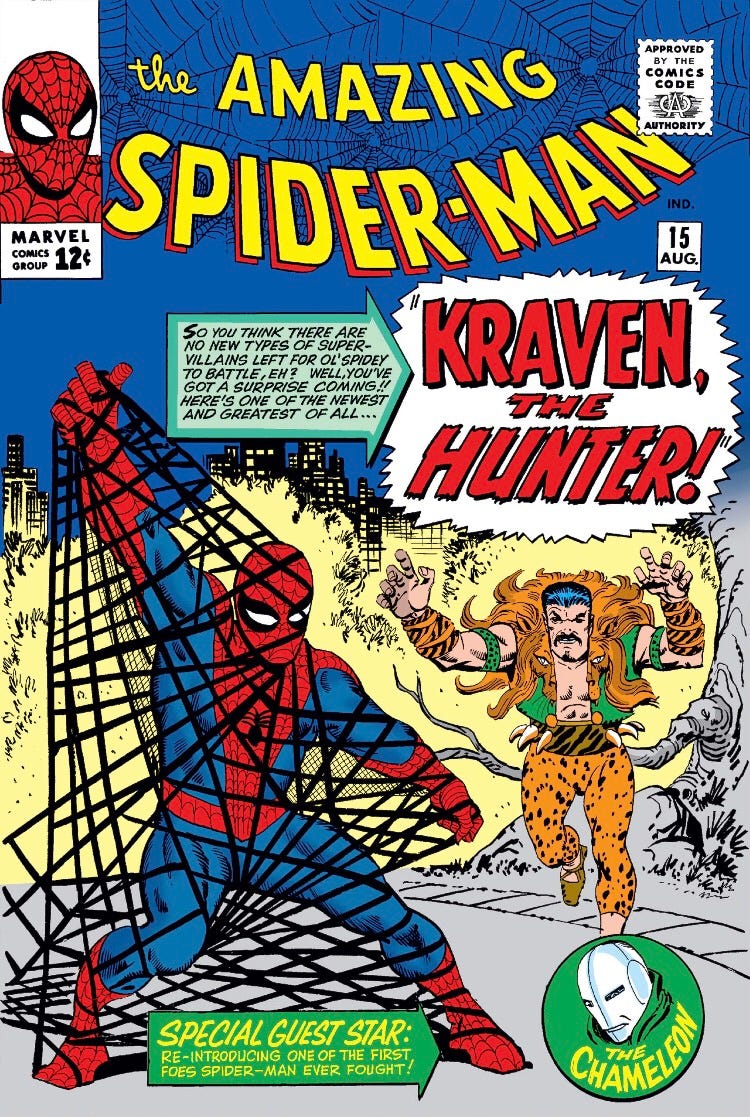
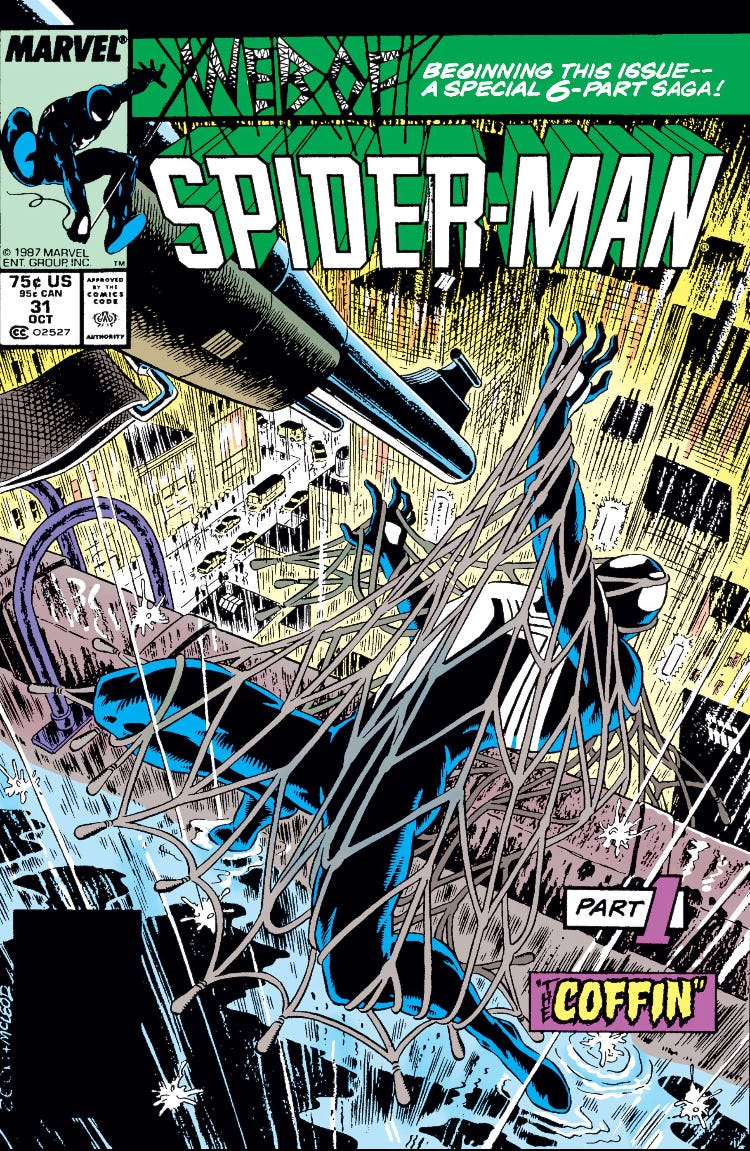
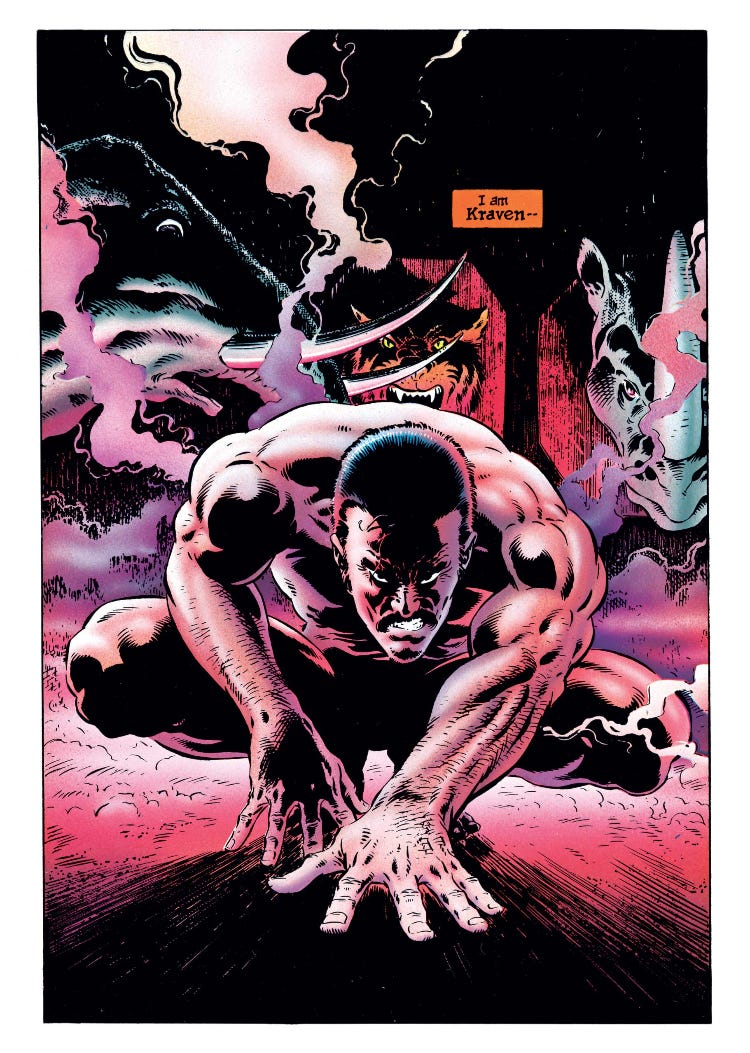
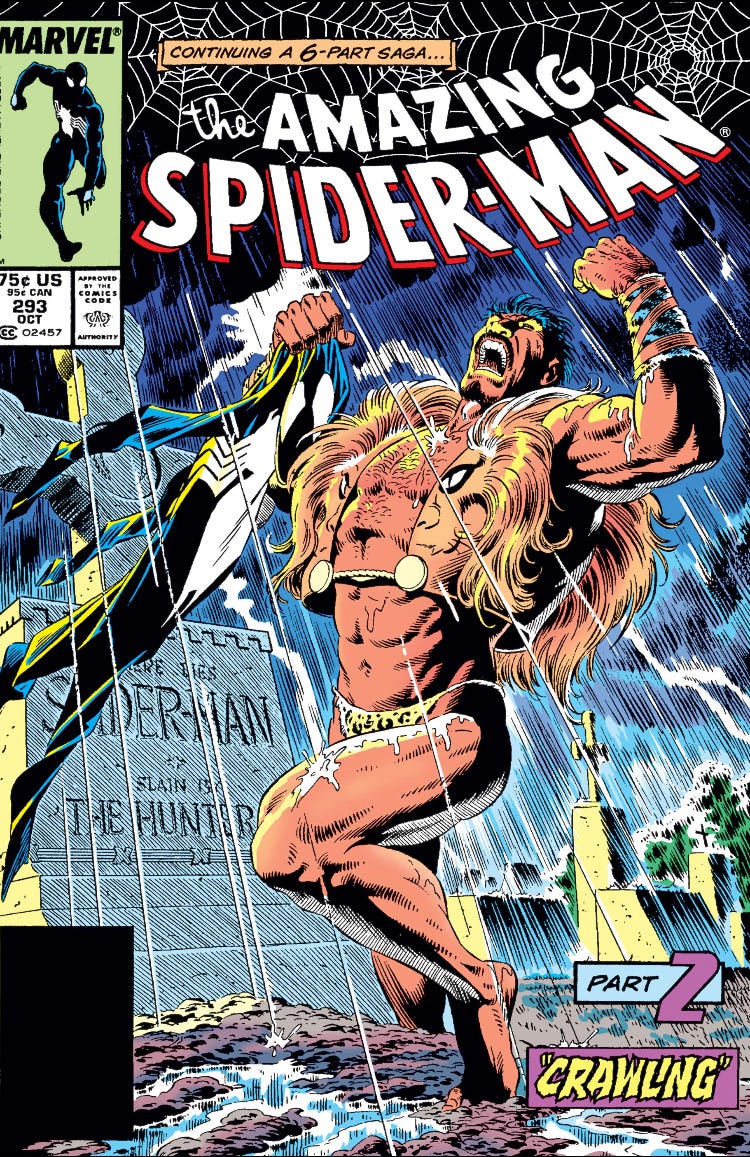
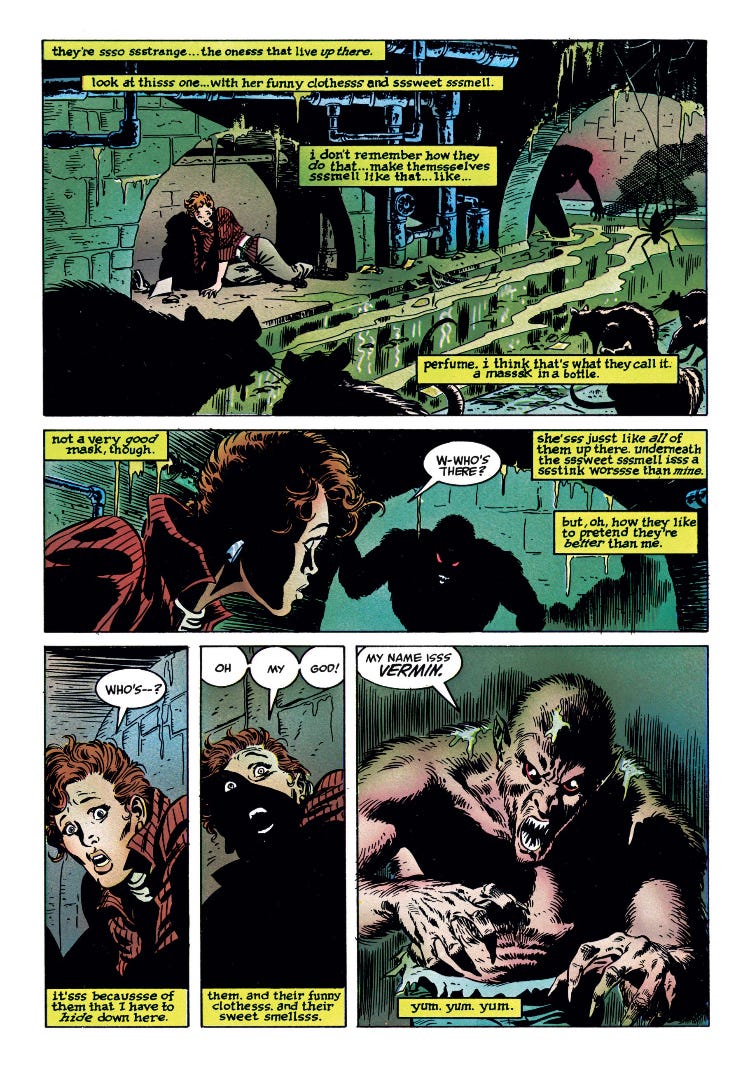
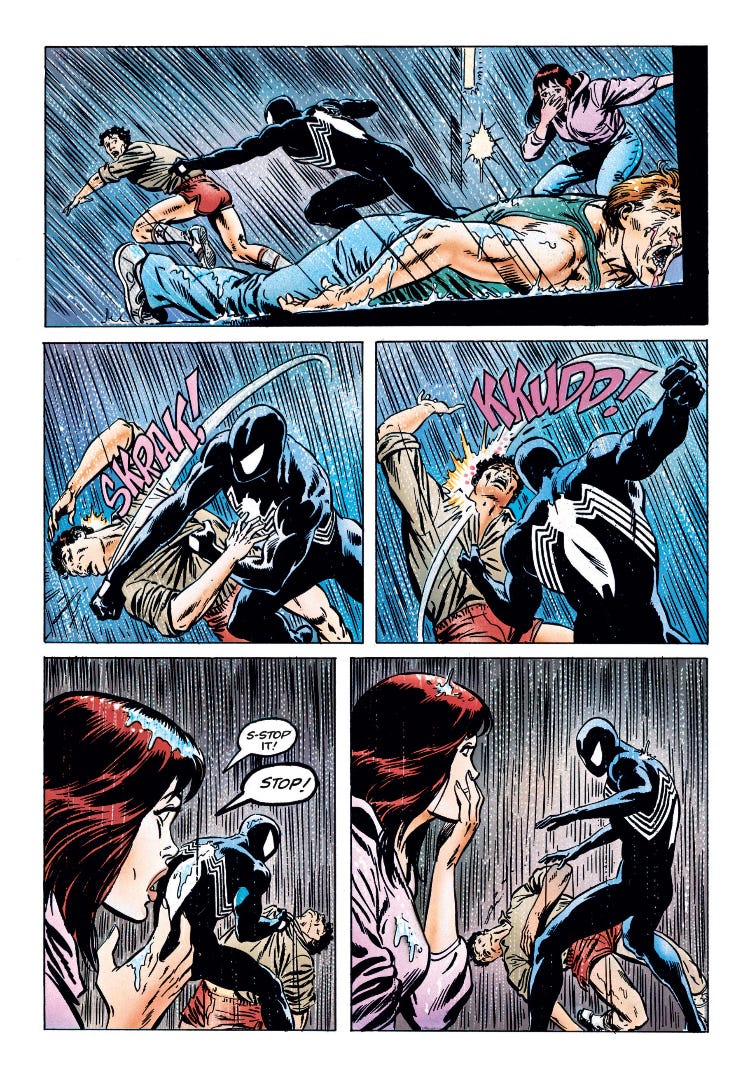
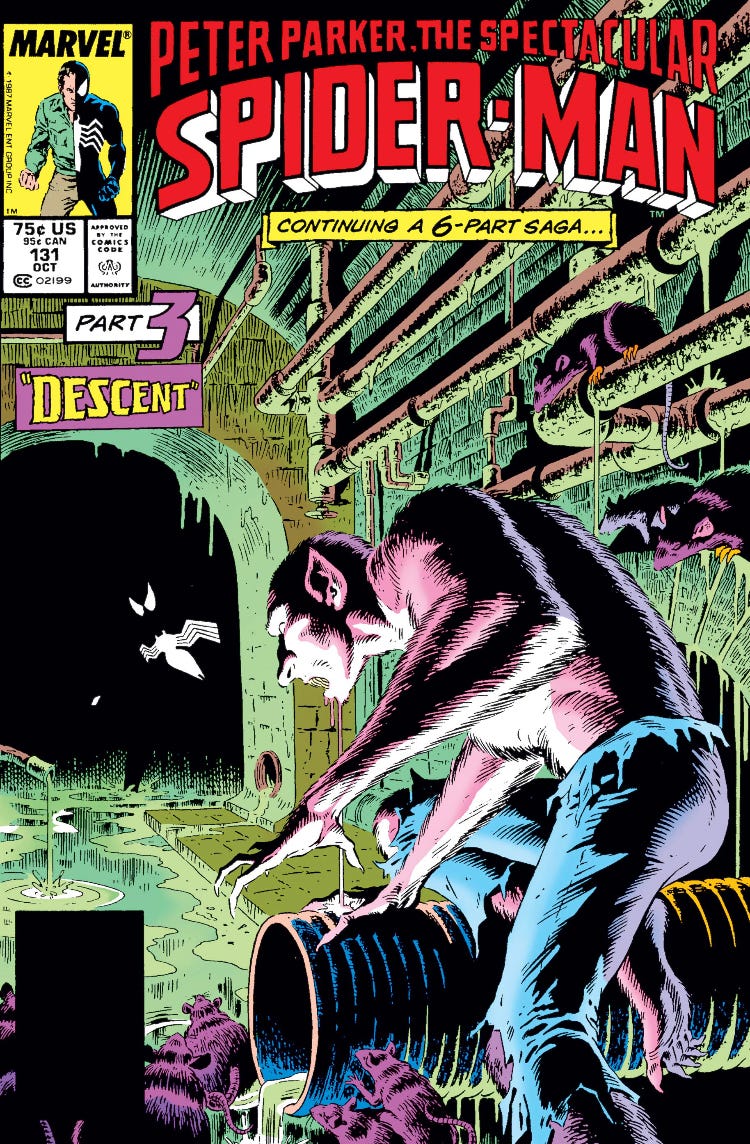
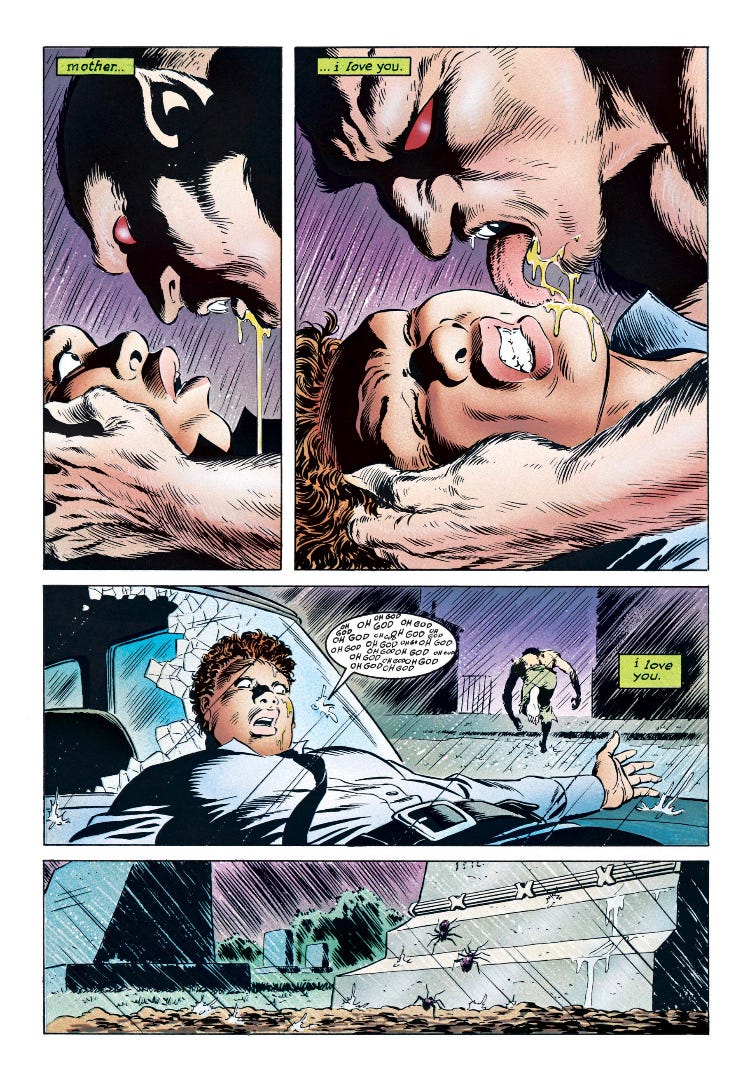

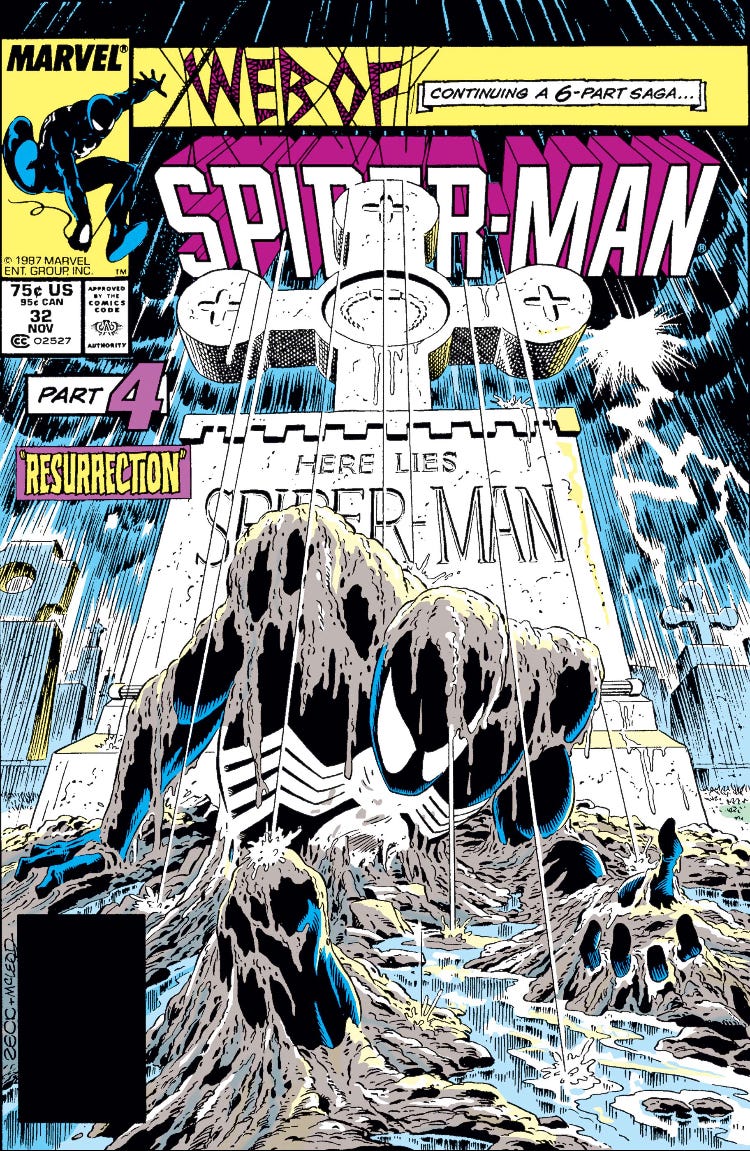
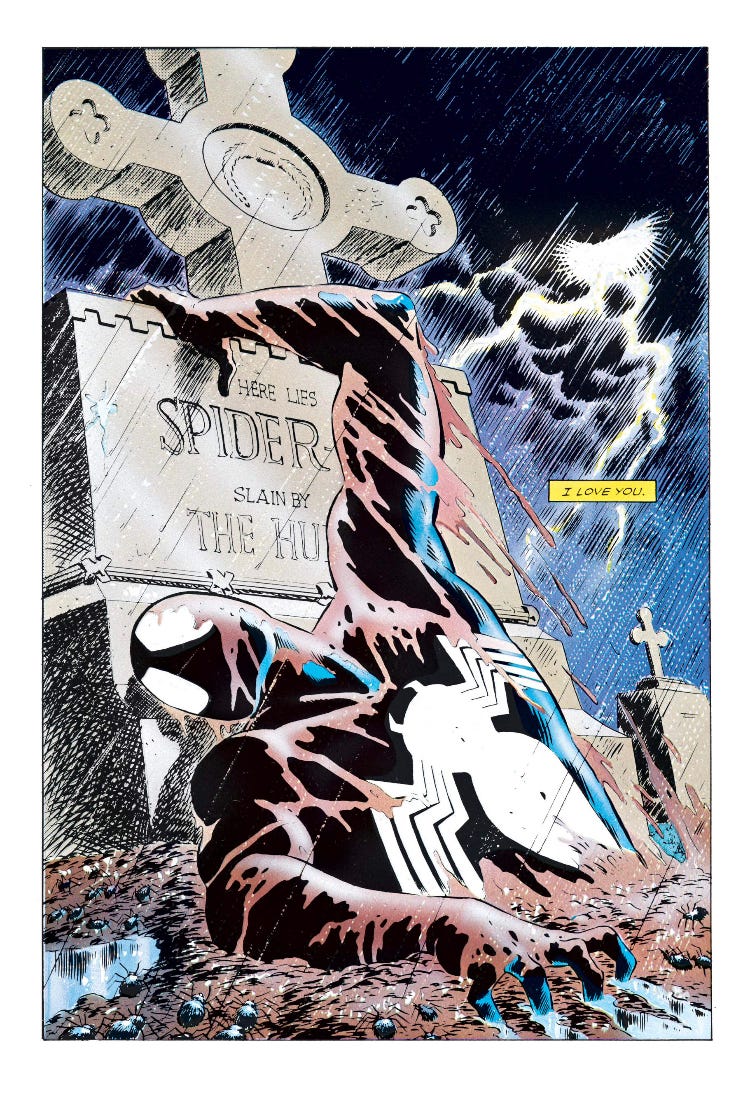
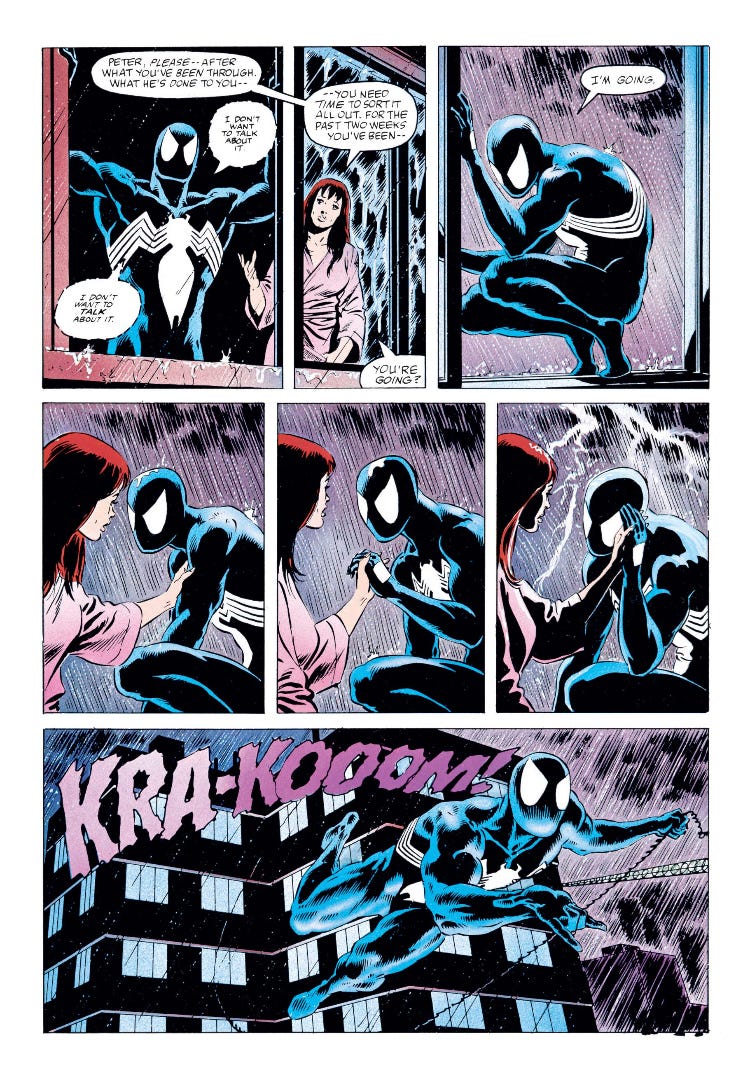

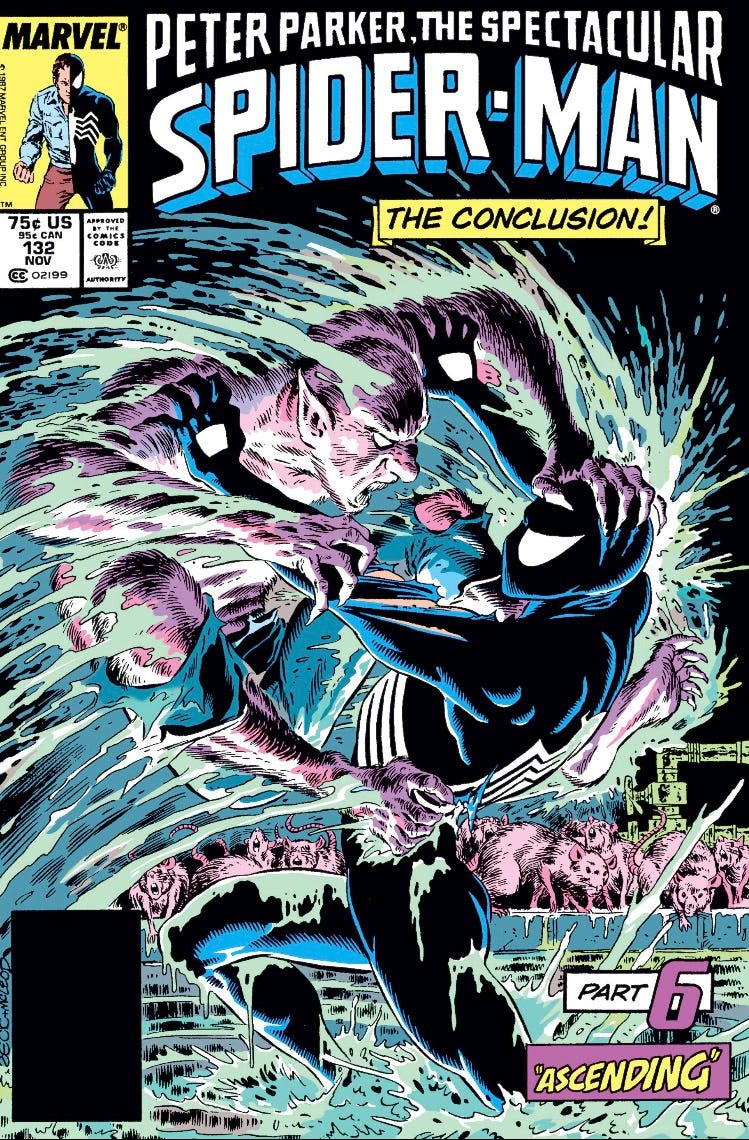
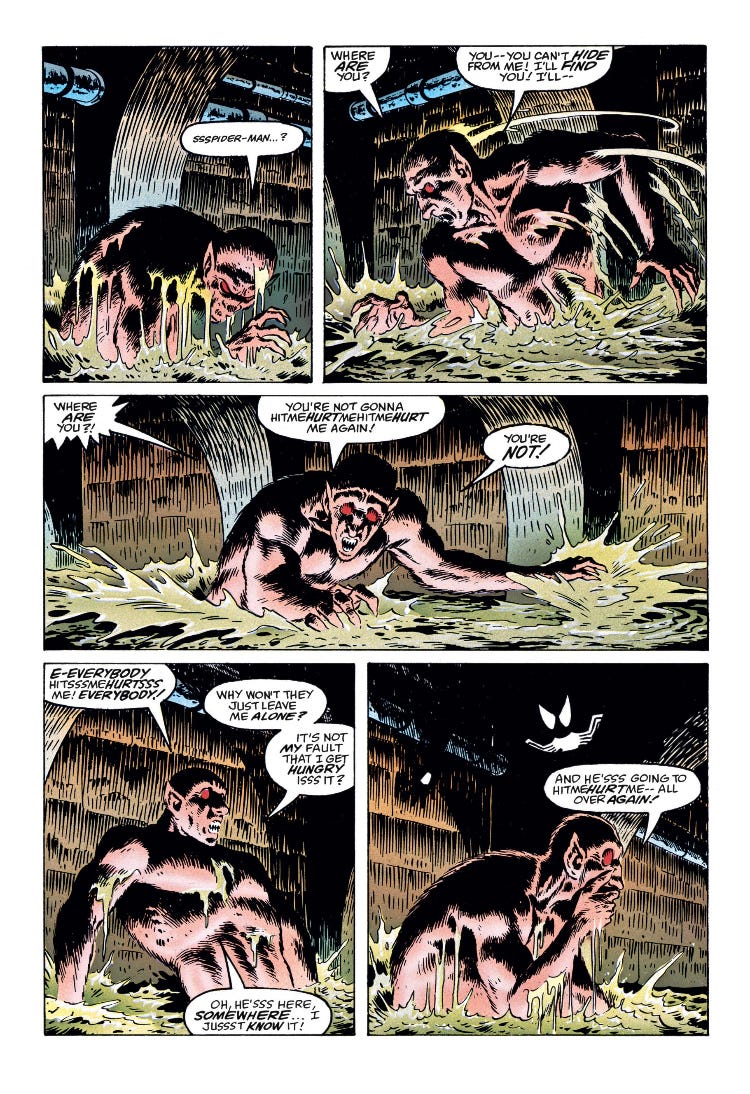
This was great!!